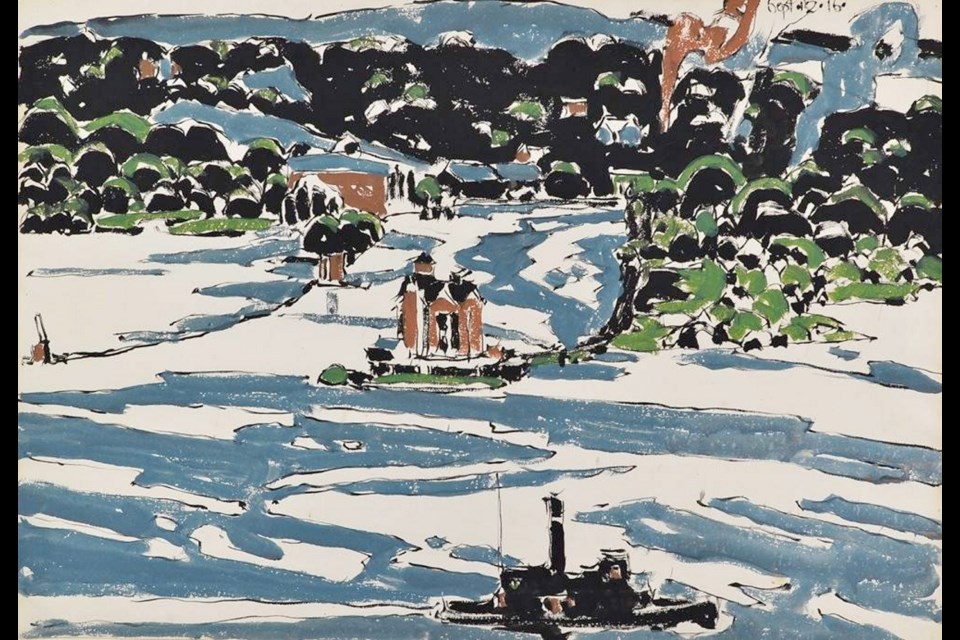EXHIBIT
What: Public open house for the new exhibit Unformable Things: Emily Carr and Some Canadian Modernists
Where: Art Gallery of Greater Victoria, 1040 Moss St.
When: Saturday, Jan. 19, all day.
Admission: By donation
One of the ongoing challenges for the Art Gallery of Greater Victoria is to find fresh new ways of displaying works by Emily Carr.
The famed artist and writer, who was born in Victoria in 1871 and died here in 1945, remains so popular that the gallery tries to always have some sort of focus on her art.
The ideas for such exhibitions can come from anywhere, and Michelle Jacques, chief curator, said that “oddly,” she got the idea for the latest show while reading critiques of an exhibit at the Vancouver Art Gallery last year that showcased Ontario painter David Milne.
Jacques was intrigued by one commentator’s suggestion that perhaps people on the West Coast were less receptive to Milne because they were accustomed to Carr’s emotional depiction of her subjects.
“I decided to look at artists from across Canada who were painting more or less at the same time that Emily Carr was and just wanted to think about how they approached a growing tendency toward abstraction in their work,” she said.
“Were they taking the more emotional, spiritual, inspired-by-the-subject approach of Emily Carr or the more formalist, dry, interested-in-paint-on-canvas approach of David Milne?”
The result is Unformable Things: Emily Carr and Some Canadian Modernists, which launches Saturday with a public open house.
Jacques said the gallery’s previous exhibits have focused on Carr’s biography (Emily Carr: On the Edge of Nowhere and Emily Carr & the Young Generation) or her environmental concerns (Picturing the Giants: The Changing Landscapes of Emily Carr).
“This is the first exhibition in a while that takes that more art-historical approach and considers her amongst her peers,” she said.
Carr’s works account for about a quarter of the paintings in the exhibit, which largely spans the period from the 1920s to the 1940s, when she was at the height of her career, Jacques said.
One of the benefits of the show, however, is that it allows the gallery to display its limited number of paintings by artists from other parts of the country.
Milne’s Entrance to Saugerties Harbour, for instance, makes its first appearance in an exhibit since it was donated to the gallery by philanthropist Patrick Stewart in 2017.
“As we’ve been installing this show over the past couple of weeks, people who have worked here much longer than I have keep saying: ‘Oh, there are things in that exhibition that I’ve never seen on the walls before,’ ” Jacques said.
“So it is kind of strange to say that a reason to come and see an Emily Carr show is to see the works by other people. But it is a pretty interesting array of historical Canadian work.”
In addition to Milne, the exhibit features Carr alongside Group of Seven artists A.Y. Jackson, Lawren Harris and Frederick Varley.
“An interesting thing about Emily Carr is that for many years of her career, she felt really isolated and not connected to the larger conversation around painting that was really centred in eastern Canada,” Jacques said.
“Then, later in her career, she was invited to be in a show at the National Gallery and she met members of the Group of Seven and those were really inspiring relationships for her, and for the first time, she had critical feedback on her work and it really cemented the direction of her mature work.”
The show also features artists such as Ina D.D. Uhthoff, Vera Weatherbie and Max Maynard, who were working in the same part of the country as Carr.
“And while we tend to think of her as iconic and a solo genius, it’s also interesting to see her alongside other artists from this region and to think about how they’re depicting the same spaces that she’s depicting,” Jacques said.
Finally, the exhibit features a strong representation of women artists who emerged across Canada during that same period.
“Given that our focus tends to be on the Group of Seven, this is an interesting opportunity to see how many other women artists besides Emily Carr were making a voice for themselves at that time.”
The exhibit runs until Oct. 27 at the gallery’s Graham Gallery. More information can be found online at aggv.ca.



